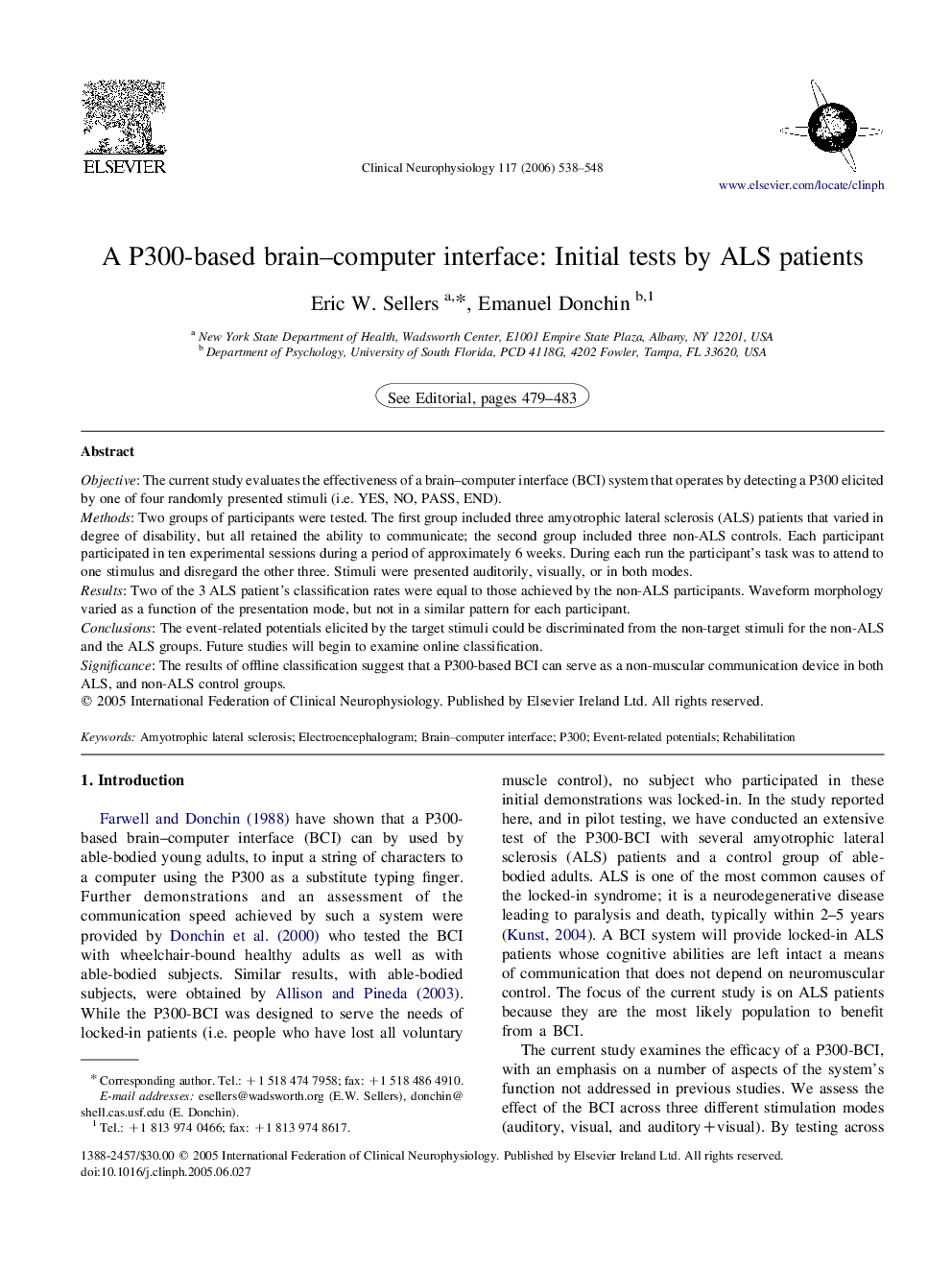| Article ID | Journal | Published Year | Pages | File Type |
|---|---|---|---|---|
| 3048424 | Clinical Neurophysiology | 2006 | 11 Pages |
ObjectiveThe current study evaluates the effectiveness of a brain–computer interface (BCI) system that operates by detecting a P300 elicited by one of four randomly presented stimuli (i.e. YES, NO, PASS, END).MethodsTwo groups of participants were tested. The first group included three amyotrophic lateral sclerosis (ALS) patients that varied in degree of disability, but all retained the ability to communicate; the second group included three non-ALS controls. Each participant participated in ten experimental sessions during a period of approximately 6 weeks. During each run the participant's task was to attend to one stimulus and disregard the other three. Stimuli were presented auditorily, visually, or in both modes.ResultsTwo of the 3 ALS patient's classification rates were equal to those achieved by the non-ALS participants. Waveform morphology varied as a function of the presentation mode, but not in a similar pattern for each participant.ConclusionsThe event-related potentials elicited by the target stimuli could be discriminated from the non-target stimuli for the non-ALS and the ALS groups. Future studies will begin to examine online classification.SignificanceThe results of offline classification suggest that a P300-based BCI can serve as a non-muscular communication device in both ALS, and non-ALS control groups.
